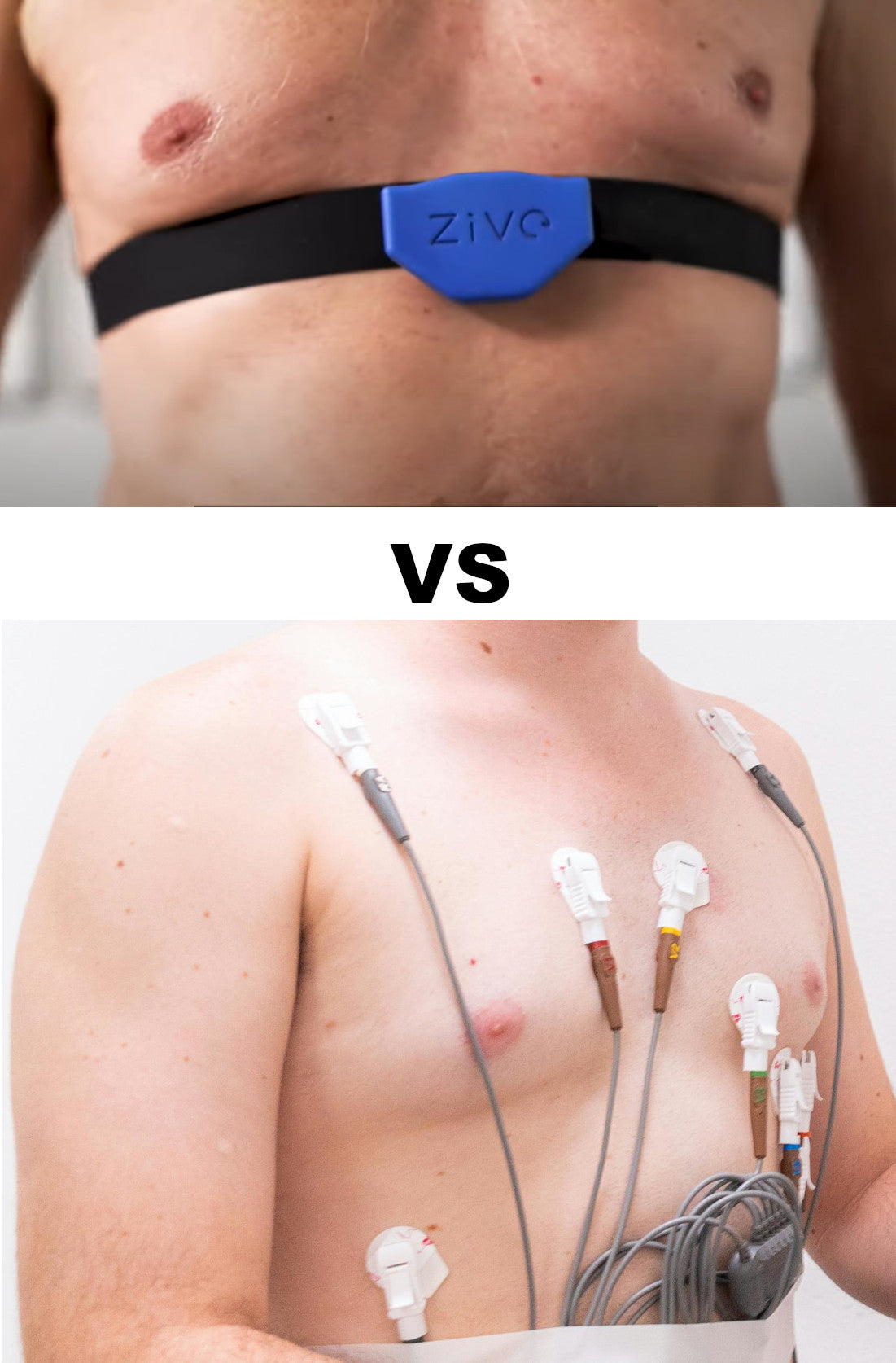Comparison Table
| Comparison | ZIVE ECG | Holter Monitor |
|---|---|---|
| Purpose and Use case | - Designed for both short-term and long-term monitoring. - Provides real-time detection of arrhythmias, ischemic changes, and other cardiac events. - Portable and user-friendly, suitable for use outside clinical settings. - Ideal for flexible and convenient heart activity monitoring. |
- Typically used for continuous, long-term monitoring (24 to 48 hours or more). - Primarily used in clinical settings to diagnose intermittent arrhythmias and other irregularities. - Suitable for patients needing comprehensive, continuous heart monitoring over an extended period. |
| Device Design and Portability | - Compact, portable, and user-friendly. - Often designed as a small patch or handheld device. - Features wireless connectivity (Bluetooth, mobile app integration). - Comfortable for long-term use, emphasizing patient mobility. |
- Larger and more cumbersome, involves multiple leads and a recording device. - Not as portable or comfortable for long-term use. - Data stored on the device, reviewed after the monitoring period ends. |
| Data Collection and Analysis | - Provides real-time data collection and analysis. - Alerts users and healthcare providers to abnormal events as they occur. - Offers cloud storage and data sharing capabilities. - Suitable for both short-term and extended monitoring. |
- Records data continuously but lacks real-time analysis. - Data must be downloaded and analyzed after the monitoring period. - Provides comprehensive data but lacks immediate feedback and remote monitoring features. |
| User Comfort and Lifestyle Impact | - Minimally invasive, allowing patients to continue daily activities. - Small size and wireless capabilities make it less intrusive. |
- Can be uncomfortable due to multiple leads and bulkier recording device. - May restrict daily activities, such as showering or exercising. |
| Technology and Features | - Includes advanced features like AI-driven analysis, real-time alerts, and cloud integration. - Often paired with a mobile app for instant access to data and results. |
- Focused on data recording with fewer advanced features. - Less emphasis on real-time alerts or mobile connectivity. |
| Clinical Applications | - Suitable for a wide range of applications, from routine check-ups to high-risk patient monitoring. - Useful for both acute and chronic conditions with flexible monitoring duration. |
- Primarily used for diagnosing conditions requiring continuous monitoring. - Effective for chronic conditions where symptoms are not always present. |
| Cost and Accessibility | - Potentially more cost-effective due to versatility in short-term and long-term use. - Easier for home use or remote monitoring. |
- Typically more expensive due to extended monitoring and clinical setup. - Less accessible for at-home use without professional guidance. |
